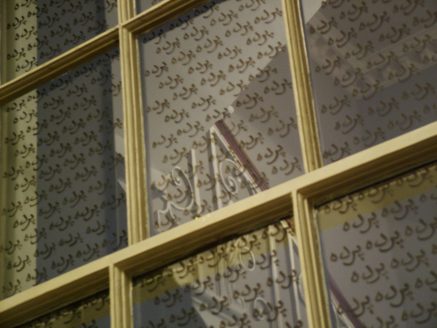
‘Interpretation’ applies to something that one does to some single element of the material, such as an association or a parapraxis. But it is a ‘construction’ when one lays before the subject of the analysis a piece of his early history that he has forgotten … [i]
In this essay, I propose that when aiming to explore the unconscious of architecture it is useful to allow psychoanalytic modes of interaction –interpretation and construction – to inform critical strategies of engagement, precisely because they allow us to investigate moments of early history which may have been covered over. But although an architectural critic may most often put him or herself in the position of the analyst using techniques of interpretation and construction, it is also the case that the critic occupies the position of the analysand. So, following Jean Laplanche, rather than use psychoanalytic theory to unravel or fix the ‘unconscious’ aspects of a work, I suggest that the critic is presented with the work as an enigma, and that s/he also produces another enigma in the form of a critical essay. It is possible to imagine then that the critic responds to a work drawing on the modes of operation of the analyst, as well as those more associative states – such as remembering and imagining – of the analysand.
This essay is conducted in the experimental and interdisciplinary spirit of my ongoing ‘site-writing’ project, which generates spatial and textual processes of art and architectural criticism out of psychoanalytic positions and modes of operation.[ii] Interested in how the spatial and often changing positions we occupy as critics – materially, conceptually, emotionally and ideologically – create conditions which make possible acts of interpretation and constructions of meaning, my practice of ‘site-writing’ operates in the interactive space of the analytic object, between critic and work, but also between essay and reader. Drawing on interpretative modes of analysis to provide the structure, and construction and association to propose the detail, my aim is to configure a response, not only to the work, but also to the invitations of others, which frame the conditions of my response, and provide a setting which positions me in relation to the work and my future reader.[iii]
Publication Details: ‘May Mo(u)rn: A Site-Writing’, Nadir Lahiji (ed) Essays in honour of Frederic Jameson, (London: Ashgate, 2011).
[i] Sigmund Freud, ‘Constructions in Analysis’ [1937] The Standard Edition of the Complete Psychological Works of Sigmund Freud, Volume XXIII (1937–1939): Moses and Monotheism, An Outline of Psycho-Analysis and Other Works, translated from the German under the general editorship of James Strachey (London: The Hogarth Press, 1963) pp. 255–270, p. 261.
[ii] My site-writing project was initiated as a mode of spatializing writing first in Jane Rendell, ‘Doing it, (Un)Doing it, (Over)Doing it Yourself: Rhetorics of Architectural Abuse’, Jonathan Hill (ed.) Occupying Architecture (London: Routledge, 1998), pp. 229–46, and then developed through a whole series of essays and texts, brought together in Jane Rendell, Site-Writing: The Architecture of Art Criticism (London: IB Tauris, 2010). It has also been used as a pedagogic tool at the Bartlett School of Architecture, UCL from 2001.
[iii] While Jameson is harshly sceptical of critical writings which create homologies between the production of texts and factory production, as well as the inclusion of the signifier within materialist critique, I argue that if one is to engage with unconscious processes then it is not only the literary text placed under analysis which must be included within the critical process but also the text produced by the critic him/herself, and that the material conditions which give rise to the production of such texts need to be taken into account. See Jameson, The Political Unconscious, p. 30.

















































